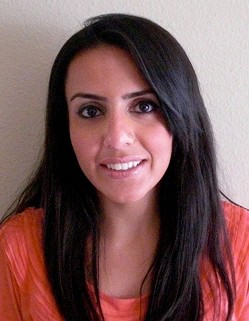User login
For more than 2 decades, dermatologists have tackled tattoo removal with Q-switched lasers, which work by heating and destroying the target chromophore, allowing pigment to be released into the extracellular space.
But Q-switched laser treatments, while effective, also are time consuming and costly, with eight or more clinical visits needed, spaced a month or more apart, before treatment is complete, according to Dr. Nazanin Saedi, director of laser surgery and cosmetic dermatology at Jefferson Medical College in Philadelphia.
New methods can help optimize clinical results from Q-switched treatments, allowing for fewer visits before the removal is complete, said Dr. Saedi. Picosecond technology – or "pico," as it is commonly called for short – is also promising.
Picosecond lasers pulse at a trillionth of a second (compared with the billionth of a second pulsed by Q-switched lasers). By delivering the energy in a shorter amount of time, picosecond lasers require less energy to clear pigment, and damage to surrounding tissue may be minimized, Dr. Saedi said in an interview.
Dr. Saedi was an investigator on one recent nonrandomized clinical trial enrolling 15 patients with dark tattoos. Using a picosecond laser, the investigators produced tattoo clearance of 75% or greater in an average of 4.25 sessions, or about half the time associated with Q-switched lasers (Arch. Dermatol. 2012;148:820-3).
Further studies are now attempting to determine whether pico is "color blind," and therefore could work on different colors of tattoo ink, Dr. Saedi said. This would represent another advantage, because with conventional Q-switched lasers, wavelengths need to be changed for each targeted color.
Because the pico laser is still being studied and has not yet been approved by the Food and Drug Administration, clinicians may want to know how they can maximize use of currently approved technologies.
Dr. Saedi said that combining Q-switched lasers with a fractionated ablative or nonablative device offers some promise, citing a small, nonrandomized study that showed less blistering, shortened recovery time, and less treatment-induced hypopigmentation, compared with published results from standard treatment (Dermatol. Surg. 2011;37:97-9).
Other options for optimizing results include offering up to four consecutive treatments with Q-switched lasers, spaced 20 minutes apart. But realistically, Dr. Saedi said, "what works in a study may not be practical in the clinic."
SDEF and this news organization are owned by Frontline Medical Communications.
Dr. Saedi did not declare any financial conflicts related to her talk.
For more than 2 decades, dermatologists have tackled tattoo removal with Q-switched lasers, which work by heating and destroying the target chromophore, allowing pigment to be released into the extracellular space.
But Q-switched laser treatments, while effective, also are time consuming and costly, with eight or more clinical visits needed, spaced a month or more apart, before treatment is complete, according to Dr. Nazanin Saedi, director of laser surgery and cosmetic dermatology at Jefferson Medical College in Philadelphia.
New methods can help optimize clinical results from Q-switched treatments, allowing for fewer visits before the removal is complete, said Dr. Saedi. Picosecond technology – or "pico," as it is commonly called for short – is also promising.
Picosecond lasers pulse at a trillionth of a second (compared with the billionth of a second pulsed by Q-switched lasers). By delivering the energy in a shorter amount of time, picosecond lasers require less energy to clear pigment, and damage to surrounding tissue may be minimized, Dr. Saedi said in an interview.
Dr. Saedi was an investigator on one recent nonrandomized clinical trial enrolling 15 patients with dark tattoos. Using a picosecond laser, the investigators produced tattoo clearance of 75% or greater in an average of 4.25 sessions, or about half the time associated with Q-switched lasers (Arch. Dermatol. 2012;148:820-3).
Further studies are now attempting to determine whether pico is "color blind," and therefore could work on different colors of tattoo ink, Dr. Saedi said. This would represent another advantage, because with conventional Q-switched lasers, wavelengths need to be changed for each targeted color.
Because the pico laser is still being studied and has not yet been approved by the Food and Drug Administration, clinicians may want to know how they can maximize use of currently approved technologies.
Dr. Saedi said that combining Q-switched lasers with a fractionated ablative or nonablative device offers some promise, citing a small, nonrandomized study that showed less blistering, shortened recovery time, and less treatment-induced hypopigmentation, compared with published results from standard treatment (Dermatol. Surg. 2011;37:97-9).
Other options for optimizing results include offering up to four consecutive treatments with Q-switched lasers, spaced 20 minutes apart. But realistically, Dr. Saedi said, "what works in a study may not be practical in the clinic."
SDEF and this news organization are owned by Frontline Medical Communications.
Dr. Saedi did not declare any financial conflicts related to her talk.
For more than 2 decades, dermatologists have tackled tattoo removal with Q-switched lasers, which work by heating and destroying the target chromophore, allowing pigment to be released into the extracellular space.
But Q-switched laser treatments, while effective, also are time consuming and costly, with eight or more clinical visits needed, spaced a month or more apart, before treatment is complete, according to Dr. Nazanin Saedi, director of laser surgery and cosmetic dermatology at Jefferson Medical College in Philadelphia.
New methods can help optimize clinical results from Q-switched treatments, allowing for fewer visits before the removal is complete, said Dr. Saedi. Picosecond technology – or "pico," as it is commonly called for short – is also promising.
Picosecond lasers pulse at a trillionth of a second (compared with the billionth of a second pulsed by Q-switched lasers). By delivering the energy in a shorter amount of time, picosecond lasers require less energy to clear pigment, and damage to surrounding tissue may be minimized, Dr. Saedi said in an interview.
Dr. Saedi was an investigator on one recent nonrandomized clinical trial enrolling 15 patients with dark tattoos. Using a picosecond laser, the investigators produced tattoo clearance of 75% or greater in an average of 4.25 sessions, or about half the time associated with Q-switched lasers (Arch. Dermatol. 2012;148:820-3).
Further studies are now attempting to determine whether pico is "color blind," and therefore could work on different colors of tattoo ink, Dr. Saedi said. This would represent another advantage, because with conventional Q-switched lasers, wavelengths need to be changed for each targeted color.
Because the pico laser is still being studied and has not yet been approved by the Food and Drug Administration, clinicians may want to know how they can maximize use of currently approved technologies.
Dr. Saedi said that combining Q-switched lasers with a fractionated ablative or nonablative device offers some promise, citing a small, nonrandomized study that showed less blistering, shortened recovery time, and less treatment-induced hypopigmentation, compared with published results from standard treatment (Dermatol. Surg. 2011;37:97-9).
Other options for optimizing results include offering up to four consecutive treatments with Q-switched lasers, spaced 20 minutes apart. But realistically, Dr. Saedi said, "what works in a study may not be practical in the clinic."
SDEF and this news organization are owned by Frontline Medical Communications.
Dr. Saedi did not declare any financial conflicts related to her talk.
EXPERT ANALYSIS FROM SDEF LAS VEGAS DERMATOLOGY SEMINAR

